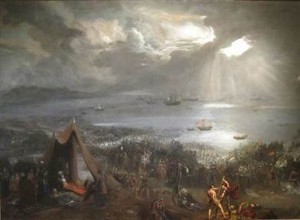April 23, 1014, The Battle of Clontarf , near Dublin, opposed the armies of the Irish king Brian Boru and the men of Leinster associated with Vikings. We remember that the victory made Brian Boru a national hero having driven the Vikings out of Ireland. Is this really what happened? What is myth and




